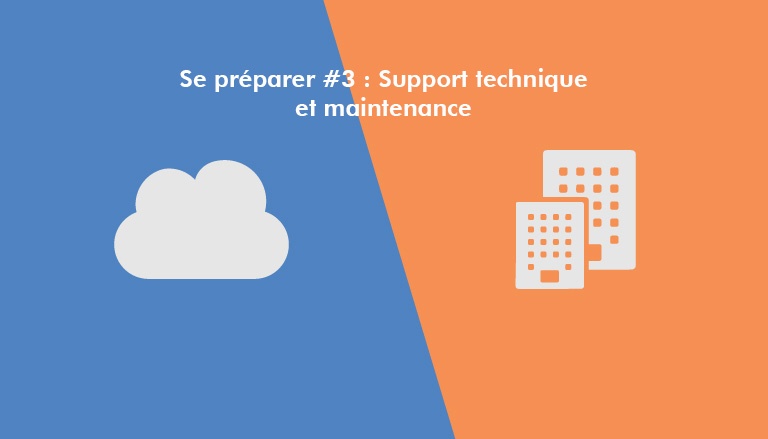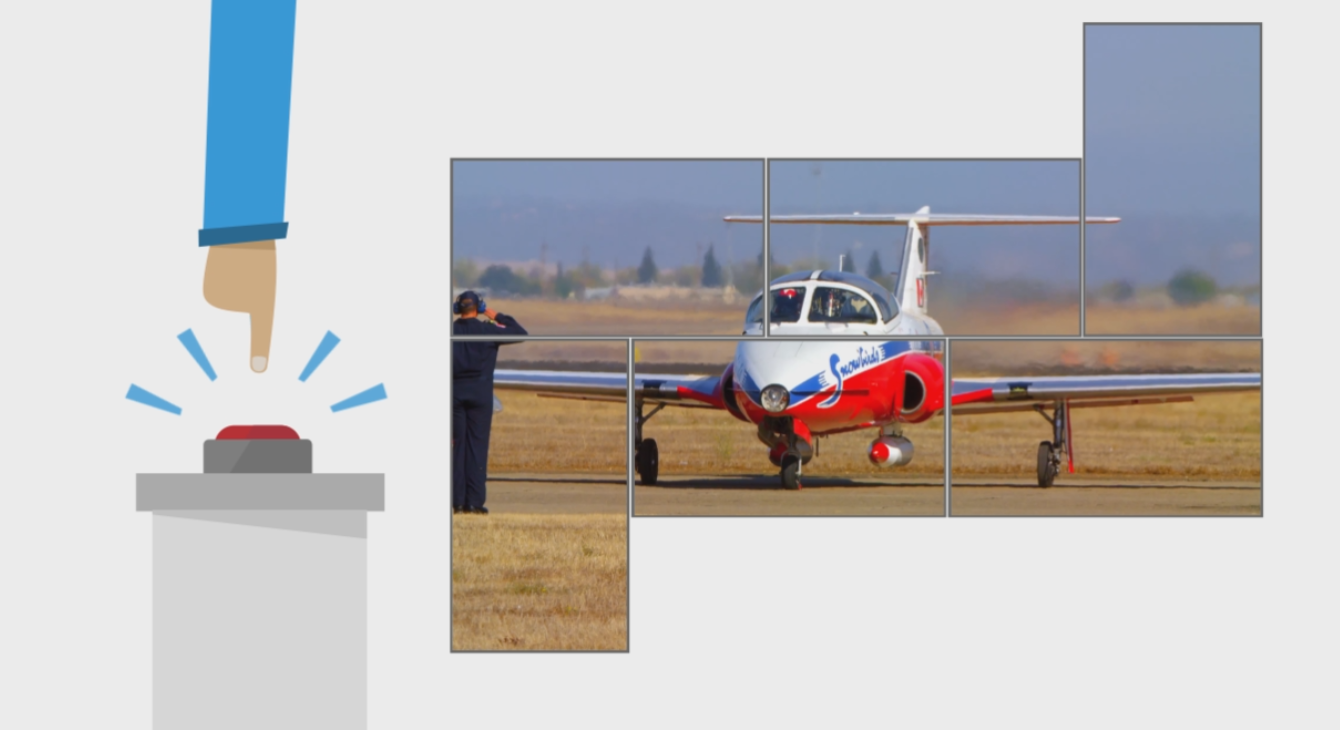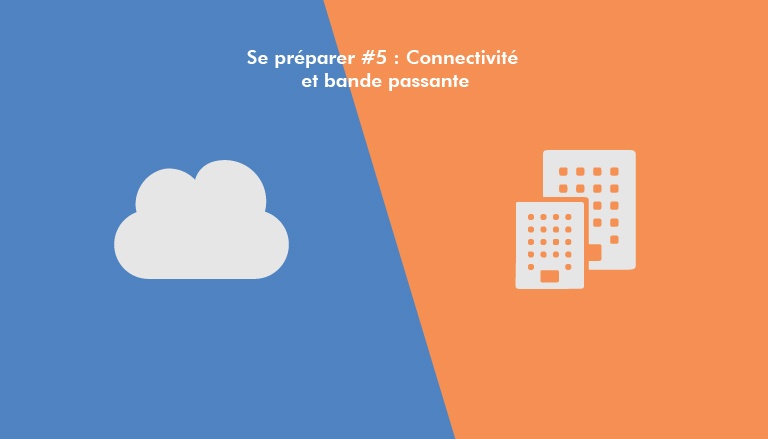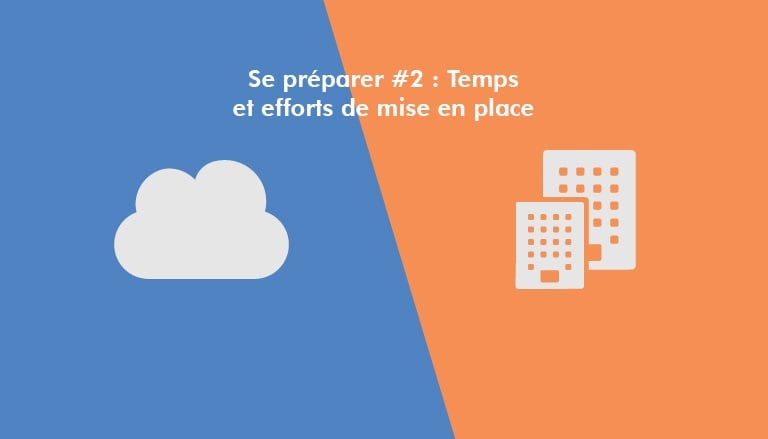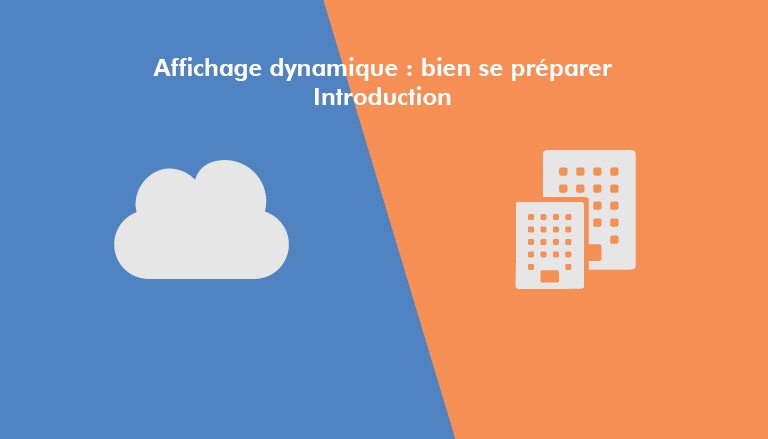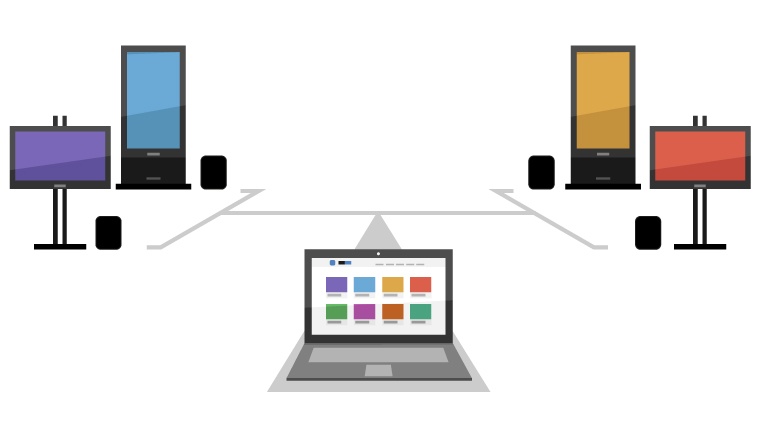This article is the third in a series about choosing the architecture of your digital signage network, if you’re not entirely in the clear about this, or aren’t familiar with the different existing digital signage architectures, start by reading this article: Digital signage: Preparing yourself well. If you’ve missed the previous article, read: Preparing yourself #2: Time and effort of the installation
Unfortunately, a perfect world does not exist!
And NO, there aren’t any solutions that will work forever without any potential problem.
So how do you solve these problems, and who you’ll help you with that?

Case of the hosted model
With this architecture, the service provider can’t access the servers, or the players from afar, since they’re isolated on the local network of the client. It is thus the technical team of the company that will have to resolve incidents. Quite often, the provider can be reached by mail, chat or phone to guide the technical team. (These services are generally charged extra, in the form of a yearly subscription.) However, the incidents that cannot be solved by the company itself, require the on-site intervention of the provider. These interventions, besides the extra delays that they cause, are also subject to extra billing.
For larger fleets, it is often necessary for a client company to create a dedicated technical team for the maintenance of the system, which creates even more costs. This team, once trained, could intervene more rapidly in the case of an incident. It could also supervise the network in order to prevent incidents.
Case of the SaaS model
With this architecture, the servers are hosted by the provider who can intervene rapidly in the case of an incident. They can also intervene from afar on players located in the client company that are connected to the internet. Since the provider can communicate with all the equipment in the system, he can also supervise it and prevent potential damages. In the case of a major incident of the players (one that would, for example, prevent the provider from intervening from afar), a standard exchange by mail is often included in the subscription (depending on the provider of the player).
The case of the hybrid model depends enormously on the chosen solution. The provider can sometimes intervene from afar on the server, but rarely on the players, that are, after all, still isolated. He can, sometimes, supervise the server and prevent functioning errors.
Whatever the architecture, tech support is often joinable by e-mail, chat or phone, preferably before an intervention.
So it’s true that outfitting yourself with a digital signage system necessitates the anticipation of the maintenance needs of the system. The best choice of architecture essentially depends on the infrastructure of the company, on the presence of a tech team, and its capacity to resolve potential incidents. Nevertheless, the SaaS model solution, thanks to the facts that the provider can intervene from a distance on all the equipment that they installed, and because the price of these interventions is often included in the subscription, seems more efficient and less costly than the on premise models.
Continue reading the series:
- Preparing yourself #4: Training and time to get started
You have a digital signage project, ask for a free demo.
